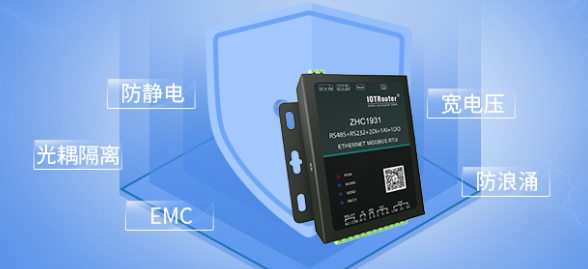Funcionamiento del servidor de puertos serie
After the invention of the USB protocol, serial port devices are rarely seen in our lives. For this reason with modern transmission systems, most manufacturers no longer add serial ports to laptops, desktop computers, or modern devices. Therefore, devices such as serial printers , electronic scales, barcode scanners, serial consumer/industrial equipment, GPS, surveillance cameras, etc. usually have a serial port connection function, such as RS232, RS422 or RS485 serial port to interact with the computer.
The problem of establishing remote access to a group of devices from a remote computer requires the help of a serial port server. A serial port server can connect most serial devices to an Ethernet port so that it can be used directly on a computer or switch or network router and control the device remotely.
Definition of serial port server
A serial server is a small device sometimes called a serial network converter, a serial TCP/IP server, or a simple terminal server. However, all of these names are just different names for the same device, which converts serial port (RS232, RS422 , or RS485) data into Ethernet data packets, and converts Ethernet data packets into serial port (RS232, RS422, or RS485 bidirectionally) )data. It can also be used as a wireless serial server if IP/TCP packets are transmitted through ieee802. 11a/b/g network links. The serial server redirects serial devices over the network. Therefore, it eliminates the need for a physical connection to the computer. The serial port server has its unique IP address. That’s why it’s often called a server.

Working process of serial port server
First of all, when you purchase a serial server, you need to install the driver software on your computer. This program is used to create virtual COM ports on your computer to facilitate connecting hardware. All virtual serial ports are created through the device software’s helpers , which arrive as local items in the computer’s Device Manager. This approach works on any COM port that requires serial-to-Ethernet hardware built into it, as if it were its own physical port. Now, every time you connect a serial device to the serial server’s COM port, the peripheral device will be redirected to the computer’s virtual serial port. It will be recognized by the computer as a local device.
Set up serial port server
Install driver
Most serial port server systems have added virtual COM port drivers. Before you can start using the converter, you must first install it on your computer. Once the installation process is complete, the virtual COM software will immediately be able to create a virtual COM port in your computer’s Device Manager when the hardware is connected to your computer.
Set up hardware
To set up the serial server, simply connect the Ethernet cable, serial cable, and power adapter.
Configuration settings
After completing all the previously mentioned steps, you can start configuring the serial port server. Almost all serial servers work straight out of the box, as it automatically detects the serial interface you’re using and all other settings. However, if you need to configure the default settings, you can log in to the setting interface of the serial port server to set it. Sometimes you can log into the Unit Management panel by accessing the Virtual COM software, but most of the time it’s faster and easier to use a web browser. Simply enter the converter’s default IP address in the browser address bar and you will see the serial server’s management login page. Now you can configure the serial server to your liking.